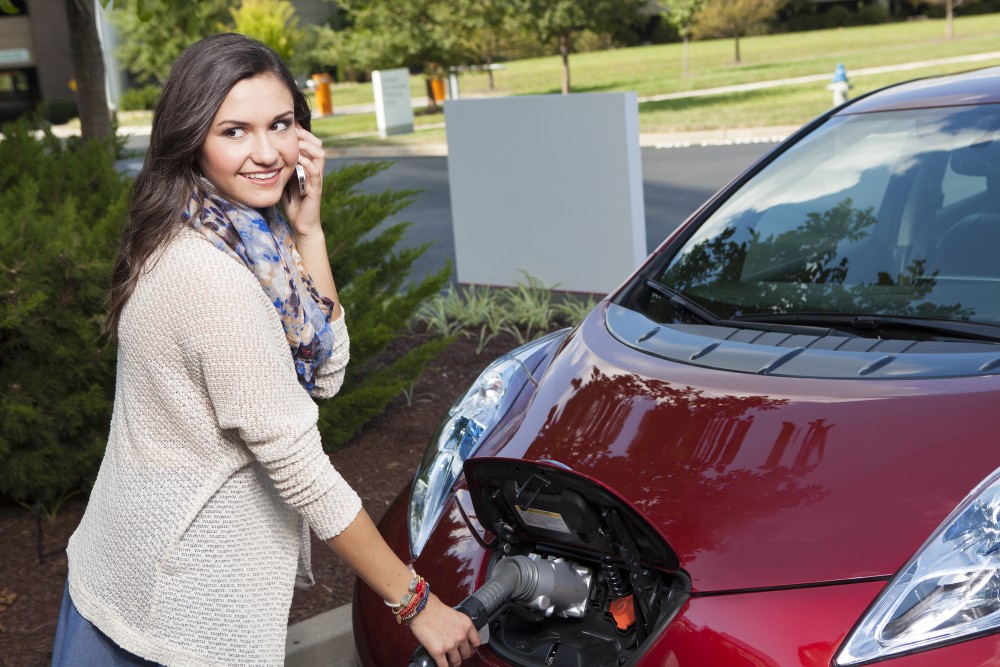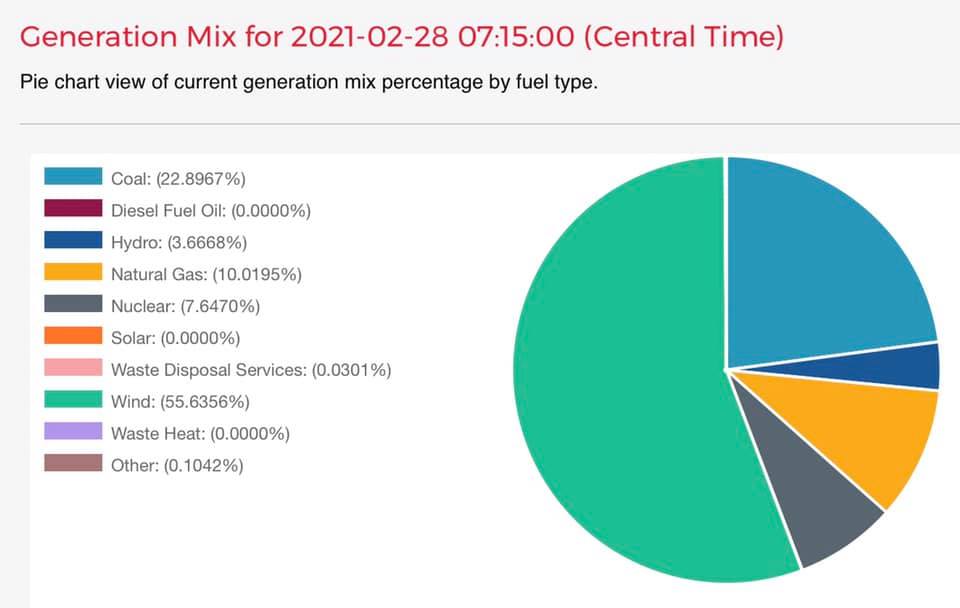How Eco-Friendly Is Electric Transportation?

Believe it or not, it’s more complicated than that, because there is no way to establish the environmental footprint associated with electrical generation with any accuracy at all.
My much-respected friend and colleague Bill Moore, founder of EVWorld.com in, get this, the mid-1990s, writes this with respect to the pie chart below, “Plugged in the Fiat 500e. Want to guess why, apart from needing to charge it?”
His point, and it’s a reasonable one, is that most of the electrical power delivered in his home state of Nebraska at that moment was coming from wind. And, since wind is among the most environmentally benign sources of energy, charging his car at that time must have been a good idea. Sounds irrefutable, doesn’t it?
Well, here’s the problem. When you create an incremental load by plugging in your car, what exactly happens? Does (in this case) 55.6% of the power come from wind? No. Grid operators are already incorporating as much wind energy as they possibly can into the grid-mix, and so something else happens. Now, exactly what that “something else” is cannot be immediately determined, but again, it’s not “Let’s ramp up renewables,” because we’re already absorbing 100% of what is available.
What actually happens is that this sets off a chain reaction that may mean Nebraska doesn’t tamp down as much coal as it otherwise could have, or a buy-sell agreement goes into place in which Nebraska is causing some power generation facility somewhere else in the country to do exactly that.
Now let’s understand the practical difference between predictable and unpredictable incremental loads. Natural gas peaker plants are, at least in the U.S., what are normally activated when, for example, the wind unexpectedly stops blowing, or a huge cloud covers a utility-scale sized solar array, or perhaps some freak load comes into the picture. Maybe the temperature climbs to a point that a certain region has never seen before and everyone and his dog is running his air conditioner.
Yet this is not the case in the event of predictable increases in load, and EVs fall into that category. Grid operators know with great accuracy how many EVs are in service in their region, and accordingly, they have plans in place to deal with these foreseeable increases in demand. They don’t ramp up these expensive natural gas peaker plants unless they have to; they are forced to choose the least-cost option, and so, for the most part they make changes in their purchasing of power from coal. A few more EVs don’t represent a huge difference in the context off the totality of the load in the U.S., and so that’s generally what’s going to happen.
As long as coal is the go-to source for predictable increments in electricity load, electric transportation will have a regrettably low ecological benefit. Yet, the moment that changes, so does this equation.
It is for this reason that people who care about environmentalism and understand it as well, favor electric transportation. With each passing month, we get closer to having coal plants phased out to the point that their overall toxic emissions are negligible, and later, entirely removed from at least the developed world, at which EVs will be the environmental deal of the millennium.

